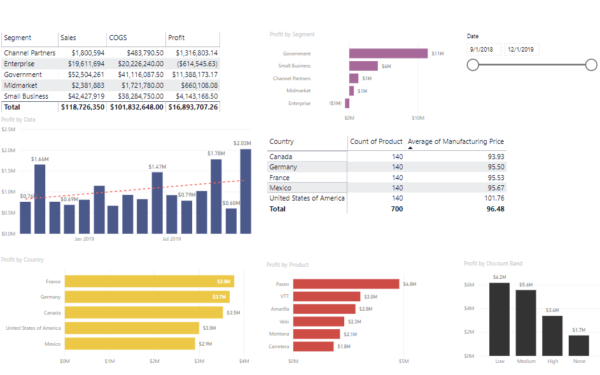3 Power BI Governance Best Practices
As you get started with Power BI for reporting and dashboards. Setting up data governance is often overlooked in order to get data to insights to users quicker. Data governance can take many forms and be overwhelming to get started. Governance focuses how people interact with the reports and ultimately the data in the reports.
Power BI governance can be applied regardless of the level of you Power BI maturity. Below are 3 best practices for you to review and consider in your Power BI journey.
1 – Power BI Security
2 – Deployment Strategy
3 – Workspace or Report Ownership
1 - Power BI Governance Security
Time to check your implementation and how Power BI security is setup. I often find workspaces with people added that are no longer with the company. Workspace owners that moved on to new roles and the new owners have not reviewed the users in the workspace.
Do you have a process for authorizing and granting users access to workspaces? Who needs to approve the request? What type of access does a user need in each workspace? Do you have sensitive data that you need to protect?
Do an audit of your environment and see what you find and what improvements may need to be implemented to more securely access and protect your data.
Read More – Roles in Power BI Workspaces
Read More – Power BI Security
2 - Deployment Strategy
How do you deploy your Power BI reports as part of your Power BI governance? Do you have your files in source control? Do you deploy to a UAT workspace or do you just overwrite the old version of the report? How do you capture the approval to deploy the report to production?
One of the most common patterns that I see is having a Sandbox or UAT workspace for testing. The reports in this workspace are pointing to production data and are ready for users to test. Once validated the reports are moved to the final workspace and then removed from the UAT.
The data quality and profiling options are built into the Power Query Editor on the View tab as shown below.
3 - Workspace or Report Ownership
Do you have ownership defined for your Power BI workspaces, reports and data? If not, you should start small and get a champion that is easy to work with in your business.
Power BI governance includes defining workspace ownership to approve who and what level of access a user can have in the workspace folder. Then for each report you need to define the report owner and what they are responsible for. Common responsibilities include approving changes or logic updates. Each report should have this information documented so everyone understands who the report belongs to.
For more information on data governance – check out The Data Governance Institute.
Looking for help? Fill out the contact form for a free consultation.
CDO Advisors Microsoft Power BI Solutions:
Get Power BI Consulting – CDO Advisors Increase Power BI Adoption
Increase Power BI Adoption – See how we help you get more from your investment
Power BI Consulting as a Service – Low Monthly Fees, Pay Per Month Per User
Microsoft Power BI Demo – Compare your current reporting to Power BI
Power BI Quick Start Solutions – Ready to start or enhance your Power BI?
Microsoft Power BI Consulting – Learn more about our Consultants
Use Power BI to Transform Your Data – Transform your business with Data

